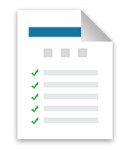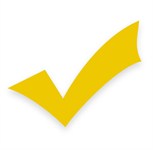| |
| Item | Suggested availability | Comments
|
| Pocket mask with oxygen port - paediatric and adult | Immediate | According to local policy |
| Oxygen mask with reservoir - paediatric and adult | Immediate | |
| Self-inflating bag with reservoir - paediatric and adult | Immediate | |
| Clear face masks, size 00, 0, 1, 2, 3, 4, 5 | Immediate | |
| Oropharyngeal airways, sizes 00, 0, 1, 2, 3, 4 | Immediate | |
| Nasopharyngeal airways, sizes 4.0, 4.5, 5.0, 5.5, 6.0, 7.0 (and lubrication) | Immediate | Uncuffed tracheal tubes of appropriate length may be used as an alternative according to local policy |
| Portable suction (battery or manual) with Yankauer sucker (paediatric and adult) and soft suction catheters, sizes 5, 6, 8, 10, 12, 14 | Immediate | |
| Oxygen cylinder (with key if necessary) | Immediate | |
| Oxygen tubing | Immediate | |
| Magill forceps (adult and paediatric sizes) | Immediate | |
| Stethoscope | Immediate | |
| Supraglottic airway device with syringes, lubrication and ties/tapes/scissors as appropriate | Accessible | Choice of device and size will depend on local policy and staff training |
| Tracheal tubes, uncuffed sizes 2, 2.5, 3, 3.5, 4, 4.5, 5, 5.5, 6 | Accessible | Cuffed paediatric tubes according to local policy |
| Tracheal tubes, cuffed sizes 6, 7, 8, | Accessible | |
| Croup tube (uncuffed, longer than standard tracheal tube), sizes 2, 2.5, 3, 3.5 | Accessible | Alternative devices may be substituted according to local policy (e.g. Cole's® tubes) |
| Tracheal tube introducer (stylet) small and medium | Accessible | |
| Intubating bougie - 5 Ch & 10 Ch | Accessible | |
Laryngoscope handles (x 2) and blades (sizes -straight 0, 1, curved 2, 3, 4)
Spare batteries for laryngoscope and spare bulbs (if applicable) | Accessible | |
| Syringes, lubrication and ties/tapes (e.g. Elastoplast® / Hypofix® /ribbon gauze/tape) and scissors | Accessible | |
| Waveform capnograph - with appropriate tubing and connector (battery-operated) | Accessible | NAP4 - 4th National Audit Project of the Royal College of Anaesthetists and the Difficult Airway Society, March 2011 |


